2/08/2021
From 1 March 2021, the new energy consumption classification scale will come into force for the following product groups: dishwashers, washing machines and dryers, refrigerators and freezers, wine storage appliances and then later also: air conditioners, ovens, hoods, tumble dryers, water heaters.
The most significant change in the new energy labels is the elimination of energy efficiency classes using the + symbol, such as A++. The new appliances will be ordered from A (the best performing) to G (the least performing), as in the past.
Those currently labelled A++, the top of the range, will be downgraded to category B, while class A will be left empty to make room for the development of even more efficient models.
New methods will be used to measure energy consumption and to determine the label class. It will also be possible to obtain additional information about the product directly, using the QR code on the energy label. The QR code is linked to a database operated by the EU from 1 March 2021. In this database, it will be possible to view and download the datasheets of all appliances for which the new energy label will be required. It will also be possible to access the database via the internet.
In this article we will explain how to read the new label of the following products:
Washing machines
Washer-dryer
Dishwasher
Refrigerators and freezers
Wine cellars
WASHING MACHINES
One of the main changes to the energy label for washing machines is the test programme's change to which all values on the label refer. For example, energy consumption will be based on 100 washing cycles. The new 'Eco 40-60'* programme is suitable for washing cotton, linen or mixed fabrics with normal soiling that can be washed at 40 °C or 60 °C, depending on the treatment symbol. Using this wash cycle, these fabrics can be washed together. The 'Eco 40-60' programme is the most efficient in 'energy and water consumption'.
*Eco 40-60: For optimum energy efficiency, the optimum washing temperature is set for this programme. The customer cannot change this temperature. The actual washing temperature is specified in the user manual and, depending on the load, may vary from the washing temperature selected for energy saving reasons. The washing results comply with legal requirements.
1 QR code
2 Energy efficiency class**
3 Weighted energy consumption** in kWh/100 operating cycles (with Eco programme 40-60)
4 Maximum load capacity
5 "Eco 40-60" programme duration
6 Weighted water consumption** in litres/operation cycle (with Eco programme 40-60)
7 Centrifuge efficiency class**
8 Noise emissions during the spin cycle expressed in dB(A) re one pW and noise emission class**
**The values apply at a quarter, half or full load.
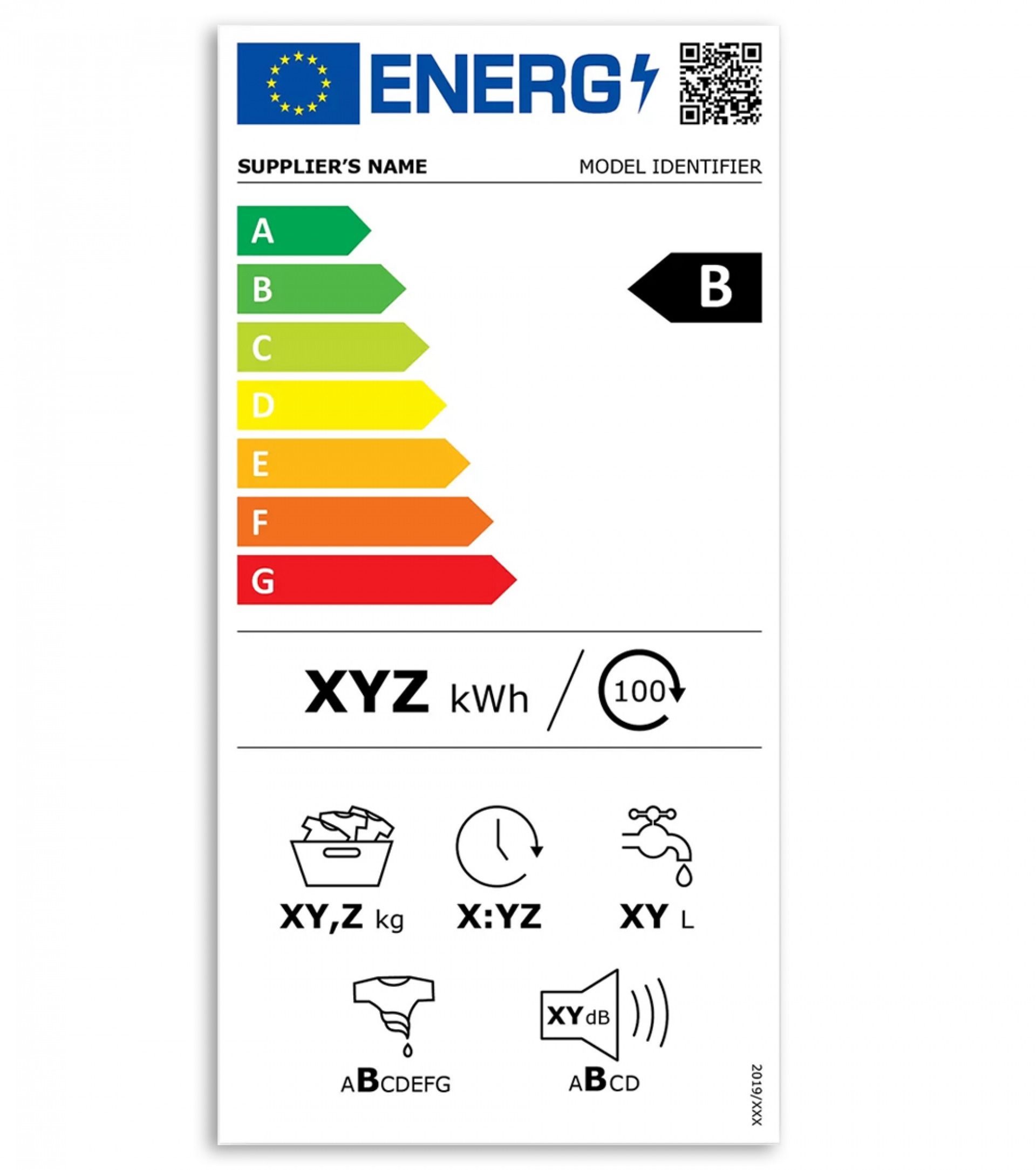
WASHER-DRYERS
The current energy label for washer-dryers has not been changed since 1996 when it was introduced; for this reason, it still shows the initial scale from A to G. Since washer-dryers are more frequently used for washing only, the label is divided into two parts. The label's left-hand side shows the values referring to the complete "washing and drying" operating cycle. The right-hand side of the label shows the values referring exclusively to the washing cycle. The values to be specified on this label, referring only to the washing cycle, reflect the mandatory information changes that must appear on the new washing machine label.
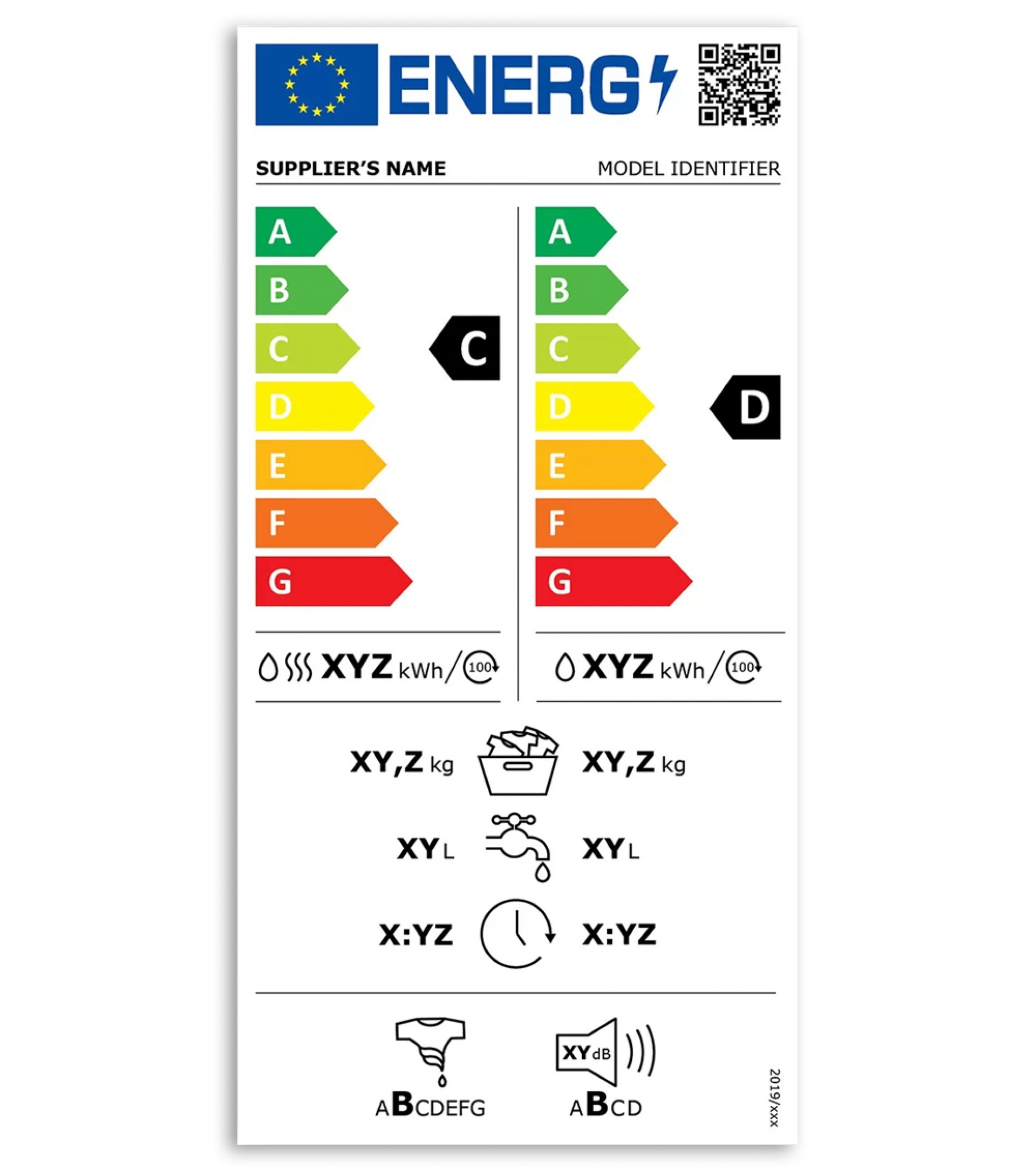
1 QR code
2 Energy efficiency class* (full duty cycle)
3 Energy efficiency class* (wash cycle)
4 Weighted energy consumption* in kWh/100 cycles (full duty cycle**)
5 Weighted energy consumption* in kWh/100 cycles (wash cycle)
6 Maximum load capacity (full duty cycle**)
7 Maximum load capacity (wash cycle)
8 Weighted water consumption** in litres/operating cycle (full operating cycle**)
9 Weighted water consumption* in litres/operation cycle (wash cycle)
10 Programme duration (complete operating cycle)
11 "Eco 40-60" programme duration
12 Centrifuge efficiency class**
13 Noise emissions during the spin cycle expressed in dB(A) re one pW and noise emission class
**The values apply to quarter-, half-and full-load washing. During washing and drying at the half and full load.
** washing and drying
DISHWASHER
The energy efficiency class for dishwashers continues to be based on the "Eco" programme. However, the test standard has been modified. For example, to determine the washing and drying performance, plastic cups, pots, and utensils will be used to better reflect current usage patterns. What is new is that the duration of the Eco programme is specified. This programme is particularly ecological, ideal for dishes with everyday dirt and is the most efficient in terms of "energy and water consumption". As with washing machines and washer-dryers, energy consumption will be based on 100 wash cycles.
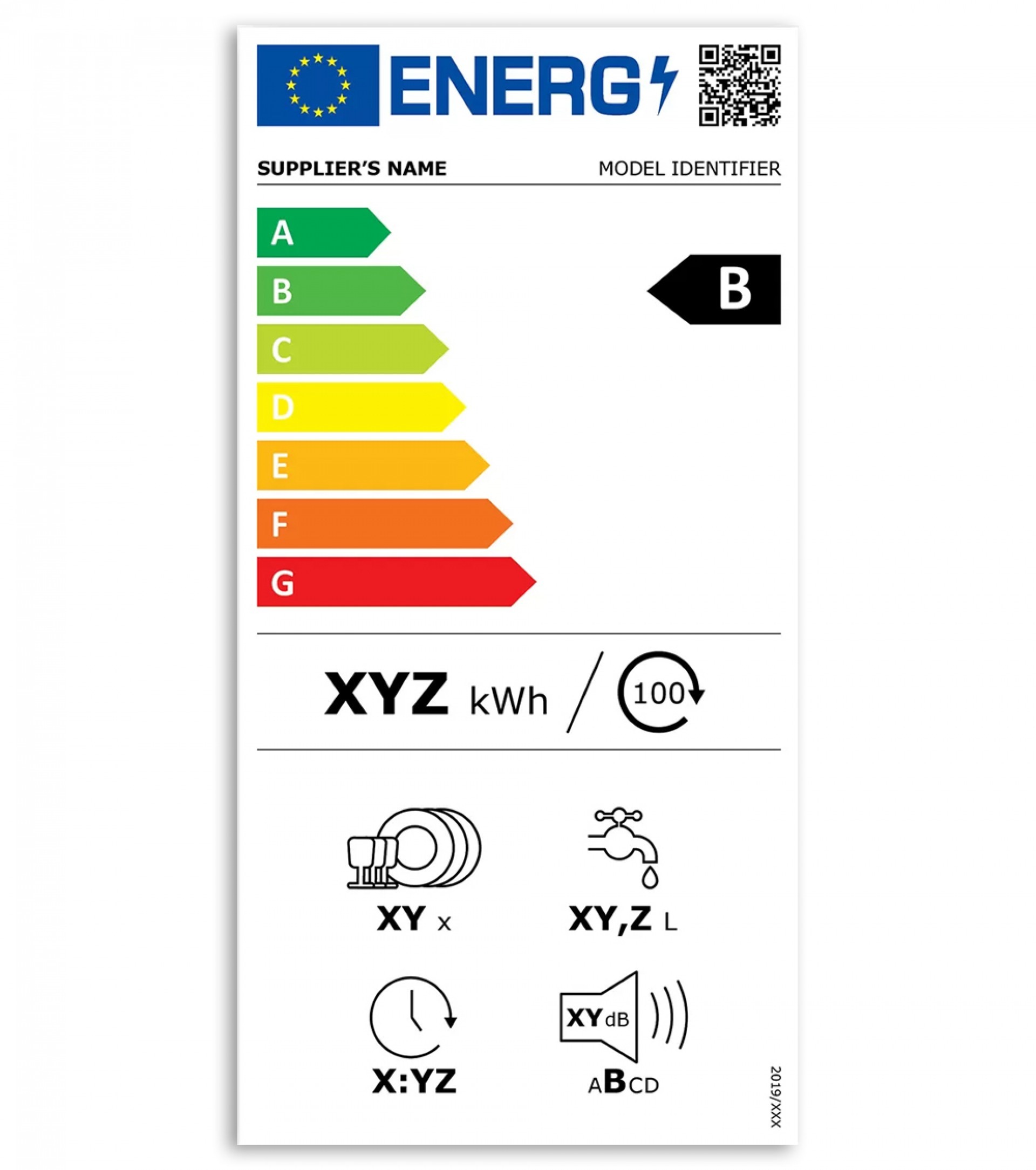
1 QR code
2 Energy efficiency class
3 Energy consumption in kWh/100 operating cycles (with Eco programme)
4 Number of standard dishes with Eco programme
5 Water consumption in litres/cycle (with Eco programme)
6 Duration of "Eco" programme
7 Sound emissions expressed in dB(A) re one pW and sound emission class
REFRIGERATORS AND FREEZERS
The procedure for determining the energy class becomes clearer and more comprehensive. It considers the following elements: type of appliance, operating principle, room temperature and the number and size of storage compartments. The other elements of the new energy label remain mostly unchanged. Energy consumption continues to be indicated in kWh as annual consumption ("annum"). Also, the label provides information on the total volume of all refrigerator compartments and all freezer compartments (if any), as well as the noise emissions and the noise class.
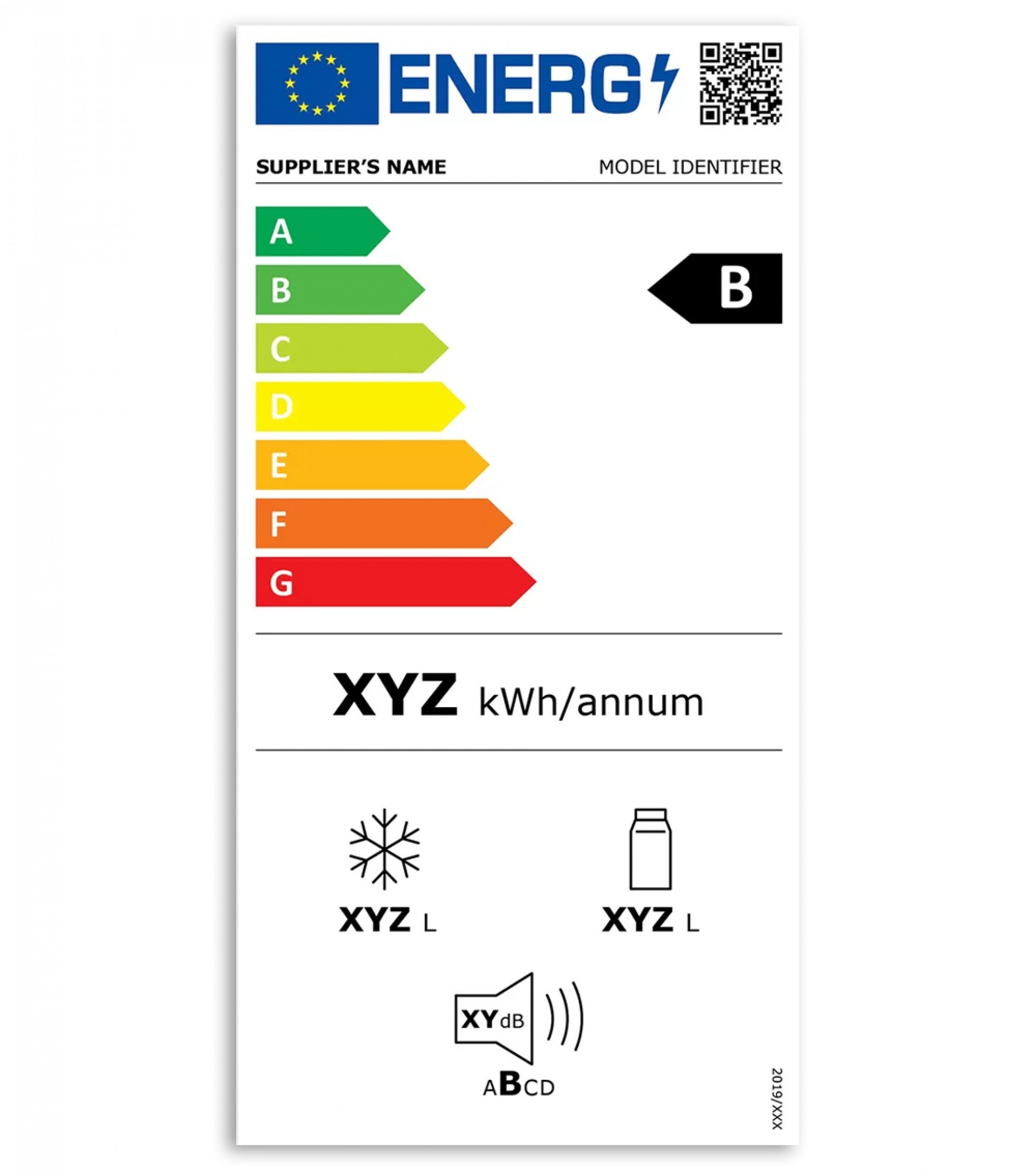
1 QR code
2 Energy efficiency class
3 Energy consumption in kWh/year (measured under new standard conditions)
4 Total volume of all freezer compartments
5 Total volume of all refrigerated compartments
6 Sound emissions expressed in dB(A) re one pW and sound emission class
WINE COOLERS
As with other labels, the scale of energy efficiency classes is also changing for wine cellars. Also, these labels display a QR code and the noise emission class. As before, the annual energy consumption and the number of standard bottles of wine that can be stored are still indicated.
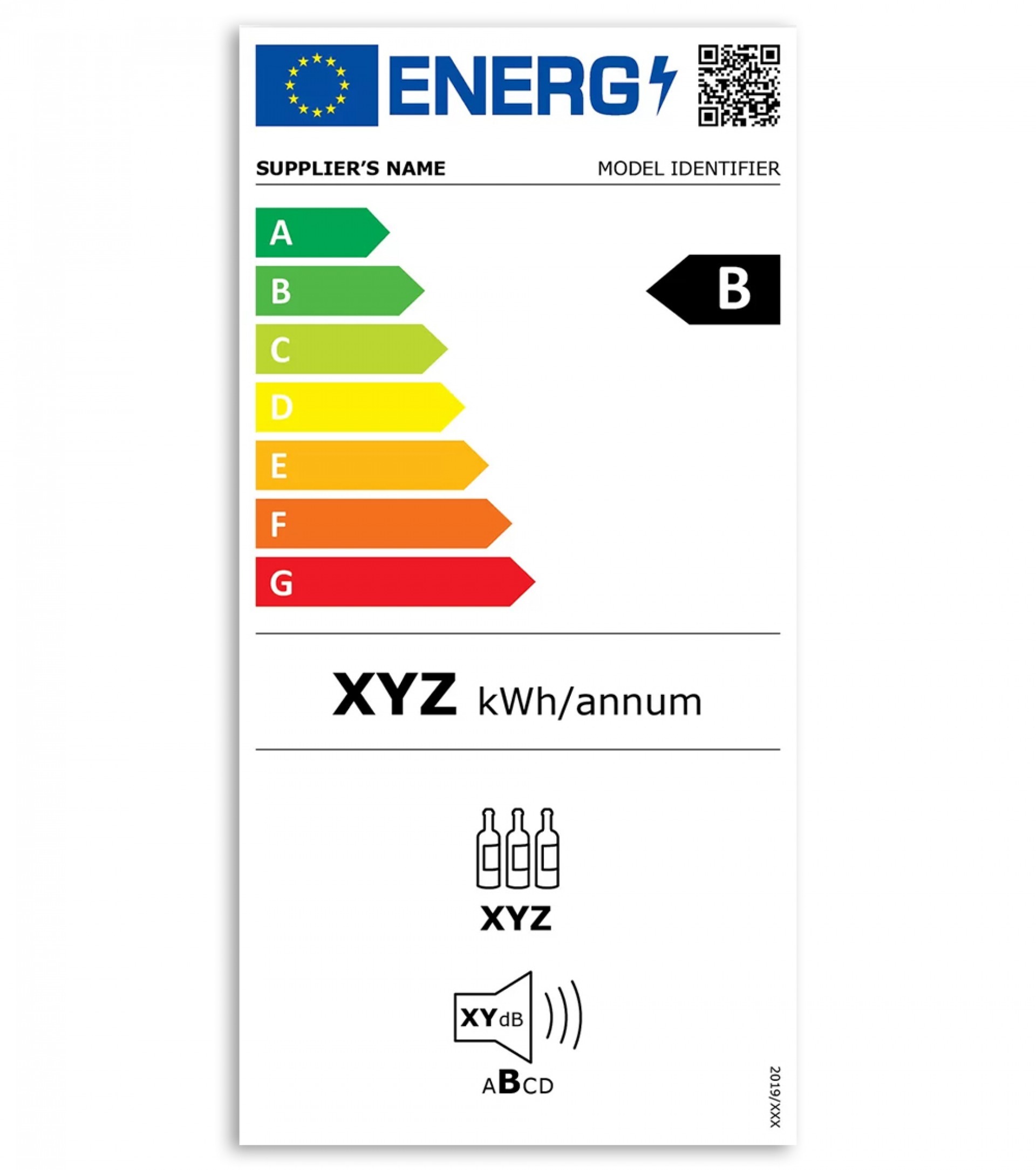
1 QR code
2 Energy efficiency class
3 Energy consumption in kWh/year (measured under new standard conditions)
4 Number of standard wine bottles that can be stored
5 Sound emissions expressed in dB(A) re one pW and sound emission class
Do you want to know more?
Visit the website of the Home Appliances Europe